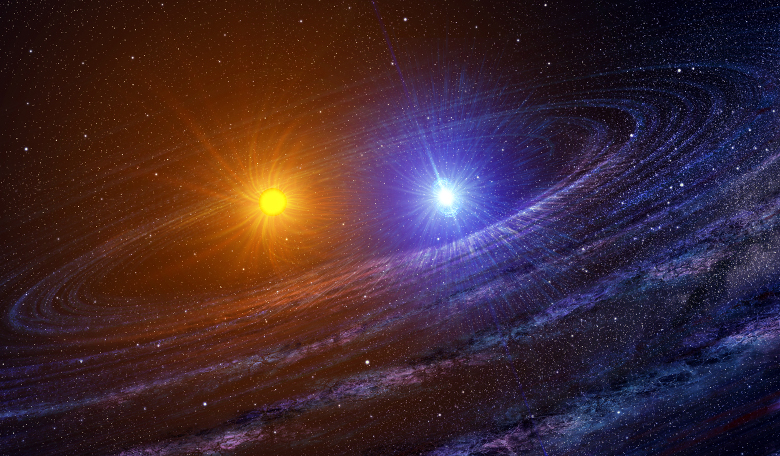Searching for rocky planets around a single star is challenging enough, now however, researchers have for the first time found evidence of planetary debris surrounding a double star system.
In a study led by a team from University College London (UCL), researchers found the remains of shattered asteroids orbiting two stars in a 'Tatooine-like' configuration. Double stars such as these are given this name after Luke Skywalker’s home planet in Star Wars which orbits two suns, but in this case, the stars in question consist of a white dwarf and a brown dwarf roughly 1000 light-years away in a system called SDSS 1557.
What makes this discovery so important is that to date, all exoplanets discovered in orbit around double stars are gas giants, like Jupiter, that are thought to form in the icy regions of their systems. The rocky material found by the researchers puts a new spin on what type of planets can form around two objects whose competing gravity will push and pull the debris making it difficult to stick together as it tries to coalesce and form fully-fledged planets. “With the discovery of asteroid debris in the SDSS 1557 system, we see clear signatures of rocky planet assembly via large asteroids that formed, helping us understand how rocky exoplanets are made in double star systems,” said lead author, Dr Jay Farihi from UCL whose research is published in Nature Astronomy.
"We know of thousands of binaries similar to SDSS 1557 but this is the first time we've seen asteroid debris and pollution. The brown dwarf was effectively hidden by the dust until we looked with the right instrument", said co-author Dr Steven Parsons (University of Valparaíso and University of Sheffield). "But when we observed SDSS 1557 in detail we recognised the brown dwarf's subtle gravitational pull on the white dwarf."
The polluting material, which is spread in a large belt around the double stars and is flowing onto the surface of the white dwarf, equates to an asteroid at least 4 kilometres in size and is made up of a high metal content including silicon and magnesium. This is in contrast to the carbon-rich icy material usually found in other double star systems.
"Any metals we see in the white dwarf will disappear within a few weeks, and sink down into the interior, unless the debris is continuously flowing onto the star,” said co-author Professor Boris Gänsicke (University of Warwick) who analysed the data. “We'll be looking at SDSS 1557 next with Hubble, to conclusively show the dust is made of rock rather than ice."











